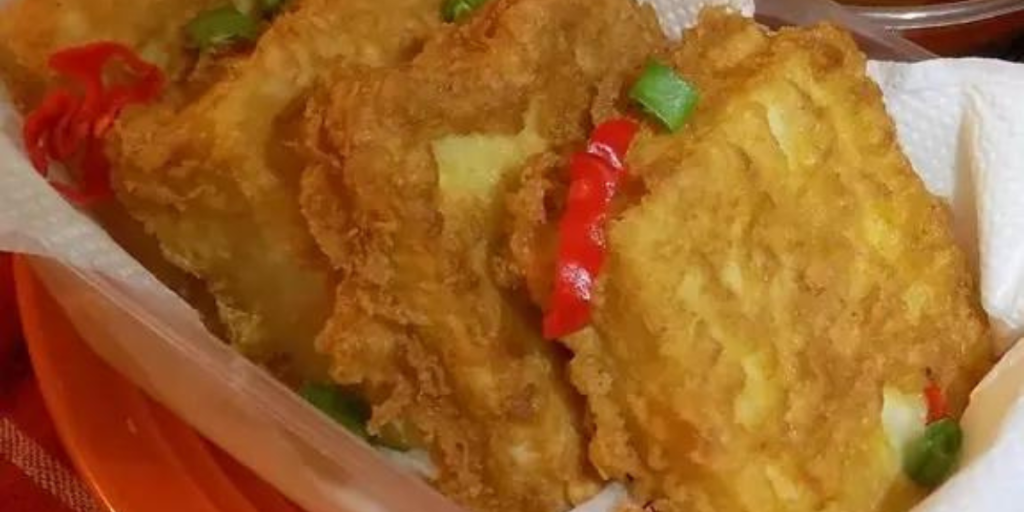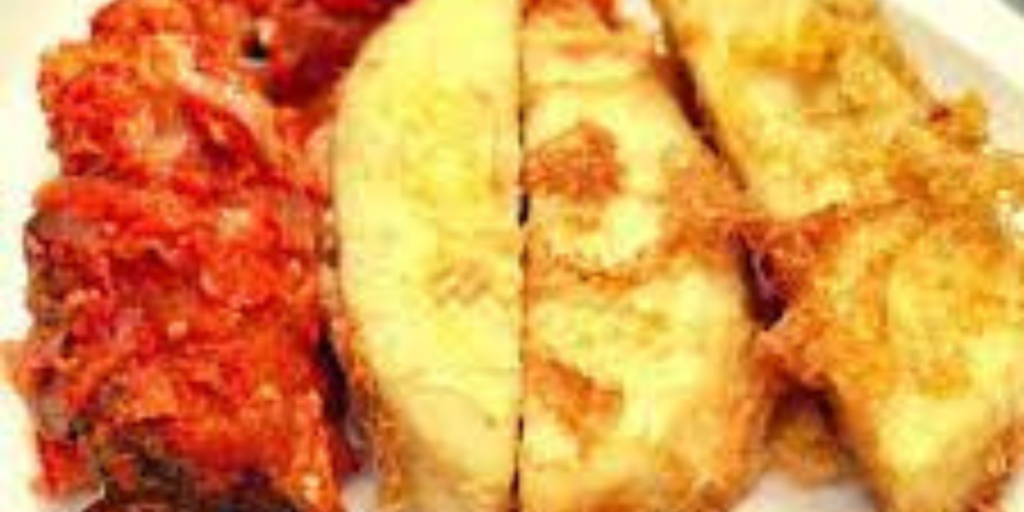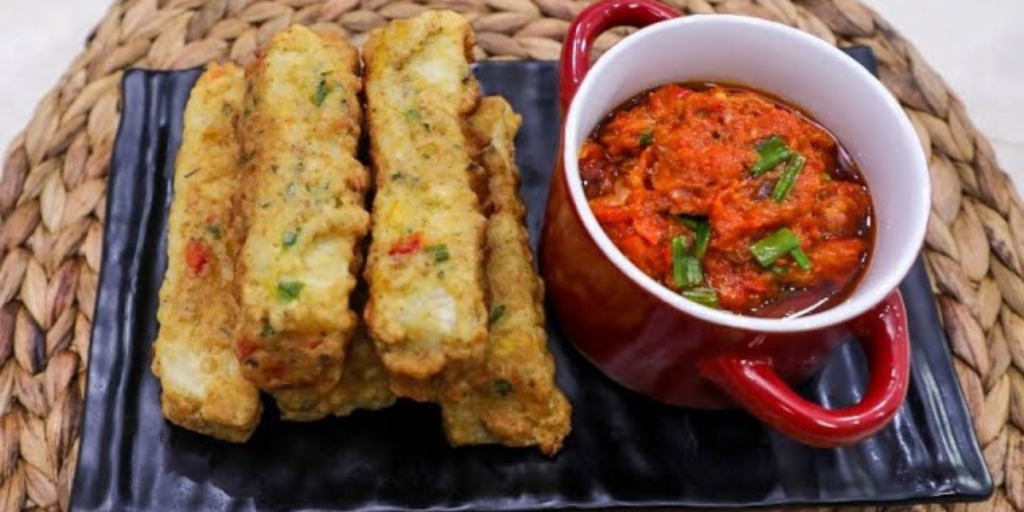Table of Contents
Can I use potatoes for Yamarita?
Can I use potatoes for Yamarita? This intriguing question sets the stage for our in‐depth exploration into whether these humble tubers can serve as a viable substitute or even an innovative twist for traditional Yamarita recipes. In this comprehensive guide, we will explore the origins of Yamarita, the culinary role of potatoes, and the many factors that can help you decide if potatoes are the right choice for your Yamarita creation.
Can I use potatoes for Yamarita? – Introduction

When exploring new culinary horizons, the question Can I use potatoes for Yamarita? often arises as a natural curiosity among home cooks and gourmet enthusiasts alike. Traditionally, Yamarita is known for its unique ingredients and cultural heritage, but modern twists have opened up the possibility of using alternative ingredients such as potatoes. This article will serve as your ultimate guide, covering over 3000 words of expert insights, nutritional comparisons, cooking techniques, and substitution guidelines to help you confidently answer this question in your own kitchen.
In today’s food landscape, creativity and flexibility in the kitchen are celebrated. As a result, the debate around ingredient substitutions has gained traction, making it essential for you to know if your pantry staple, potatoes, can transform or complement the essence of Yamarita. Whether you’re looking to innovate or simply make use of what you have on hand, read on to discover everything from the historical background of Yamarita to detailed nutritional and flavor analyses, expert opinions, and a step-by-step guide for preparing your own version.
Can I use potatoes for Yamarita? – Historical Background and Cultural Significance
Understanding the context of Yamarita is crucial to determining the suitability of using potatoes as an ingredient. Traditionally, Yamarita is a dish steeped in cultural significance. Originating in regions where indigenous ingredients played a pivotal role in daily cuisine, Yamarita was often crafted with locally sourced tubers and spices that provided both sustenance and flavor.
The Roots of Yamarita(Can I use potatoes for Yamarita)
Historically, Yamarita has been passed down through generations, evolving with regional variations. The original recipes typically involved native tubers, herbs, and spices that showcased the local terroir. As culinary techniques evolved and global trade expanded the availability of ingredients, substitutions became more common. This historical evolution leads us to the modern-day question: Can I use potatoes for Yamarita?
Traditional Ingredients vs. Modern Adaptations(Can I use potatoes for Yamarita)
While classic Yamarita recipes might have relied on ingredients that are rare or seasonal outside their native regions, modern adaptations often embrace readily available substitutes. Potatoes, for instance, have become a global staple known for their versatility and affordability. Their neutral flavor profile and adaptability to various cooking methods make them a popular choice for experimental recipes.
How to Make Rich Meat Pie Like a Pro Best of…
Culinary Innovation and Preservation(Can I use potatoes for Yamarita)
In the realm of culinary arts, preserving traditional recipes while incorporating new elements is both a challenge and an opportunity. Chefs and home cooks alike have begun experimenting with potatoes as a substitute, aiming to maintain the integrity of Yamarita’s flavor while adding a contemporary twist. This blend of tradition and innovation continues to redefine what Yamarita can be in the modern kitchen.
Can I use potatoes for Yamarita? – Nutritional Comparison and Health Benefits

When considering any substitution, nutritional content plays a crucial role. Comparing the nutritional profiles of traditional Yamarita ingredients and potatoes can help you decide whether this change is beneficial for your diet and health.
Nutritional Profile of Traditional Yamarita Ingredients
Traditional Yamarita recipes often incorporate ingredients that are rich in fiber, vitamins, and minerals. Depending on the region, these might include:
- Native tubers that provide essential carbohydrates and fiber.
- Local herbs and spices known for their antioxidant properties.
- Natural fats from traditional cooking methods that help in the absorption of fat-soluble vitamins.
These ingredients not only contribute to the dish’s unique flavor but also offer significant nutritional benefits that have been valued for centuries.
Nutritional Profile of Potatoes
Potatoes are one of the most widely consumed tubers worldwide, known for their nutritional density:
- Carbohydrates: Potatoes are a rich source of carbohydrates, providing energy for daily activities.
- Vitamins and Minerals: They contain significant amounts of vitamin C, potassium, and B vitamins.
- Fiber: With their skin intact, potatoes offer a good amount of dietary fiber, aiding digestion.
- Low in Calories: When prepared without excessive fats, potatoes can be a low-calorie ingredient.
Comparing the Two
When asking Can I use potatoes for Yamarita?, consider the following points:
- Caloric Content: Potatoes typically have a lower caloric density compared to some traditional tubers, making them an attractive option for those seeking a lighter meal.
- Vitamin Content: The vitamin profile may differ slightly; while traditional ingredients might offer unique antioxidants, potatoes provide well-known vitamins like C and B6.
- Texture and Consistency: The starchy texture of potatoes can mimic some native tubers but might alter the mouthfeel of the dish. Adjusting cooking methods can help achieve the desired consistency.
Ultimately, the nutritional benefits of using potatoes can complement your overall diet, especially if you are aiming for a balanced intake of essential nutrients while enjoying an innovative version of Yamarita.
Best 5 Nigerian Valentine Meal for a Romantic Celebration
Can I use potatoes for Yamarita? – Culinary Techniques and Preparation Methods
Transforming traditional Yamarita recipes to incorporate potatoes requires a thoughtful approach to cooking techniques. This section will outline several methods to ensure that your adaptation remains true to the dish’s spirit while leveraging the benefits of potatoes.
Preparing the Potatoes
To start, selecting the right type of potato is crucial. Varieties such as Yukon Gold, Russet, or even red potatoes can each bring unique qualities to your Yamarita:
- Yukon Gold: Offers a creamy texture and buttery flavor.
- Russet: Ideal for a fluffier consistency after cooking.
- Red Potatoes: Hold their shape well, making them suitable for stews and dishes that require a firmer texture.
Preparation Tips:
- Peeling vs. Unpeeling: Depending on your desired texture, you can either peel the potatoes or leave the skins on. Leaving the skin can add an earthy flavor and extra fiber.
- Cutting Techniques: Uniformly cut pieces ensure even cooking. Consider dicing or slicing the potatoes based on the specific needs of your Yamarita recipe.
- Pre-Cooking: Parboiling potatoes before incorporating them into the dish can help achieve a tender yet firm texture, similar to traditional ingredients.
Integrating Potatoes into the Yamarita Base
When incorporating potatoes, consider how they interact with the other components of Yamarita. Some techniques include:
- Layering Flavors: Sauté potatoes with traditional herbs and spices before mixing them into the main dish. This helps infuse the potatoes with the authentic taste of Yamarita.
- Texture Balancing: Use mashed or diced potatoes to create a balance between the creamy and chunky elements of the dish. Experiment with combinations to achieve the ideal consistency.
- Cooking Time: Potatoes generally require different cooking times compared to other tubers. Adjust your cooking schedule to ensure that all ingredients reach the desired level of doneness simultaneously.
Experimenting with Fusion Techniques
Fusion cooking is all about creativity. If you’re experimenting with potatoes in your Yamarita, consider the following ideas:
- Potato Gratin Twist: Instead of traditional Yamarita, try a layered dish where thin slices of potato replace the usual tuber, creating a gratin-like texture.
- Crispy Potato Garnish: Incorporate a crispy potato topping for added texture and flavor contrast.
- Mixed-Tuber Medley: Combine potatoes with other traditional tubers to maintain the dish’s heritage while introducing a new flavor profile.
How to Make Best Nigerian Chin Chin in 2025
Can I use potatoes for Yamarita? – Flavor Profile and Sensory Analysis

One of the most critical aspects of any recipe substitution is how the flavor profile is affected. Let’s dive into a detailed sensory analysis comparing traditional Yamarita flavors with those achieved by using potatoes.
Flavor Dynamics of Traditional Yamarita
Traditional Yamarita boasts a rich tapestry of flavors that stem from the harmonious blend of native ingredients:
- Earthiness: Many traditional tubers bring an earthy, robust flavor that serves as the backbone of the dish.
- Herbal Undertones: Fresh, local herbs infuse the dish with subtle, aromatic nuances.
- Spicy and Savory Notes: The use of specific spices not only enhances the flavor but also adds layers of complexity, often balancing the natural sweetness of the tubers.
How Potatoes Compare
Potatoes, while versatile, bring their own distinct characteristics:
- Mild Earthiness: The natural flavor of potatoes is generally milder than that of traditional tubers. This can be both a benefit and a drawback, depending on your taste preferences.
- Creaminess: When cooked properly, potatoes offer a creamy texture that can enhance the overall mouthfeel of Yamarita.
- Neutral Base: Their neutral flavor makes potatoes an excellent canvas for absorbing other flavors. This means that the herbs, spices, and other ingredients in your Yamarita will shine through more distinctly.
Enhancing the Flavor When Using Potatoes
To ensure that your version of Yamarita with potatoes maintains a robust and balanced flavor, consider these strategies:
- Spice Infusion: Increase the quantity or variety of spices slightly to compensate for the milder flavor of potatoes. Experiment with cumin, coriander, and smoked paprika to bring depth to the dish.
- Herb Garnishing: Fresh herbs like cilantro, basil, or parsley can add a burst of freshness and complexity.
- Roasting Techniques: Roasting potatoes before adding them to the dish can enhance their natural sweetness and bring out a slight caramelization, adding an extra layer of flavor.
Through careful seasoning and preparation, the adaptation of using potatoes can not only preserve the original character of Yamarita but also introduce new, delightful dimensions to its flavor profile.
Can I use potatoes for Yamarita? – Substitution Guidelines and Best Practices

Deciding to substitute potatoes for traditional ingredients in Yamarita involves more than just a swap—it’s a culinary experiment that requires careful planning and execution. Here are some detailed guidelines to ensure your substitution is successful:
When to Consider Using Potatoes
- Availability: If traditional tubers or ingredients are hard to come by, potatoes provide an accessible and affordable alternative.
- Dietary Preferences: For those with dietary restrictions or preferences that make traditional ingredients less appealing, potatoes offer a familiar and nutritious option.
- Innovative Recipes: If you’re aiming to create a modern twist on a classic dish, using potatoes can add a unique texture and flavor without compromising the dish’s integrity.
Key Considerations for the Substitution
- Texture and Consistency:
Ensure that the potatoes are prepared in a way that mimics the texture of the traditional tubers. Parboiling, roasting, or even steaming may be necessary depending on the recipe. - Cooking Time Adjustments:
Since potatoes may cook faster or slower than the original ingredients, monitor the cooking process closely. Consider adding the potatoes later in the cooking cycle if they tend to become overly soft. - Balancing Flavors:
Because potatoes have a milder flavor, you may need to adjust the seasoning. A slight increase in spices or a longer marinating time can help the potatoes absorb the necessary flavors to complement the overall dish. - Presentation:
Aesthetics matter. Slice or dice the potatoes uniformly to ensure that the dish looks as appealing as it tastes. Use garnishes that echo traditional Yamarita presentation styles.
Expert Tips for Successful Substitution
- Trial and Error:
Begin with small batches to experiment with ratios and cooking times. Adjust based on the taste and texture achieved in each trial. - Blend with Traditional Ingredients:
Consider combining potatoes with a small percentage of the original tubers. This hybrid approach can help maintain authenticity while still reaping the benefits of using potatoes. - Documentation:
Keep a detailed record of your experiments. Note any changes in ingredient proportions, cooking times, and seasoning adjustments. This documentation will be invaluable if you decide to refine the recipe further.
Best Nigerian Pepper Soup for Christmas Gatherings 2024
Can I use potatoes for Yamarita? – Expert Opinions and Culinary Reviews
A number of culinary experts and food bloggers have weighed in on the substitution debate. While opinions can vary, there is a general consensus that innovation in traditional recipes is a sign of culinary evolution. Here, we summarize some of the expert opinions on the question Can I use potatoes for Yamarita?
Positive Feedback from the Culinary Community
Many chefs appreciate the versatility of potatoes. Some key points raised by experts include:
- Versatility and Adaptability:
Chefs note that potatoes serve as an excellent base for absorbing diverse flavors, making them ideal for fusion recipes where traditional Yamarita is given a modern twist. - Economic Viability:
The affordability and availability of potatoes make them a popular choice among home cooks, especially in regions where traditional ingredients may be scarce or expensive. - Nutritional Balance:
While the nutritional profile differs slightly, many nutritionists argue that potatoes can provide a balanced addition to the diet when prepared healthily, without compromising on the essential elements of the dish.
Constructive Criticism and Cautions

On the other hand, some experts urge caution:
- Loss of Authenticity:
Purists argue that replacing traditional ingredients with potatoes might dilute the cultural significance and unique taste of Yamarita. They recommend using potatoes only when necessary or in a controlled, experimental setting. - Textural Differences:
A common concern is the difference in texture between potatoes and native tubers. Experts advise that careful preparation is needed to match the consistency that traditional Yamarita offers. - Flavor Absorption:
There is also a point about flavor absorption—potatoes might require additional seasoning to fully integrate with the dish’s other elements, which may alter the original taste profile.
Balancing Tradition with Innovation
The overarching theme in expert reviews is that culinary innovation is an ongoing process. While the question Can I use potatoes for Yamarita? may challenge tradition, it also opens up exciting possibilities for new recipes and interpretations. The key is to balance the desire for innovation with respect for the dish’s cultural heritage.
Can I use potatoes for Yamarita? – A Step-by-Step Guide to Your Own Creation

If you’ve decided to explore the substitution in your kitchen, here is a detailed, step-by-step guide to preparing a version of Yamarita that incorporates potatoes without sacrificing flavor or texture.
Step 1: Ingredient Preparation
Ingredients Needed:
- 4-5 medium potatoes (choose your preferred variety: Yukon Gold, Russet, or red)
- Traditional Yamarita spices (cumin, coriander, paprika, and a pinch of turmeric)
- Fresh herbs (cilantro, parsley, or basil for garnish)
- Onions, garlic, and tomatoes (to create a robust base)
- Olive oil or your choice of cooking fat
- Salt and pepper to taste
- Optional: A mix of traditional tubers (if available) to enhance authenticity
Preparation Tips:
- Wash and peel the potatoes if desired. Alternatively, scrub them well and leave the skin on for extra texture.
- Dice the potatoes into uniform pieces to ensure even cooking.
- Pre-cook the potatoes by parboiling them for about 8-10 minutes. They should be tender but not fully cooked.
Step 2: Creating the Flavor Base
- Sauté Aromatics:
In a large pan, heat olive oil over medium heat. Add chopped onions and garlic, sautéing until golden. - Introduce Spices:
Sprinkle in your traditional Yamarita spices. Stir well to ensure the spices bloom in the oil, releasing their aromatic properties. - Add Tomatoes and Herbs:
Once the base is aromatic, add diced tomatoes and a handful of fresh herbs. Allow the mixture to simmer until it reduces into a thick, flavorful sauce.
Step 3: Integrating Potatoes into the Dish
- Combine Ingredients:
Add the pre-cooked potatoes into the pan with the flavor base. Gently mix to ensure the potatoes are well-coated with the spices and sauce. - Adjust Cooking Time:
Allow the mixture to simmer on low heat, stirring occasionally. This will let the potatoes absorb the flavors while maintaining their texture. If you’re blending in some traditional tubers as well, ensure they are cut to a similar size for even cooking. - Season to Taste:
Taste your creation and adjust the seasoning with additional salt, pepper, or spices if needed. The goal is to create a harmonious blend that honors the spirit of Yamarita while highlighting the unique characteristics of potatoes.
Step 4: Final Presentation and Garnishing
- Plating:
Once the dish has reached the desired consistency and flavor, transfer it to a serving bowl. The visual appeal is crucial in any modern dish, so take care in arranging the components attractively. - Garnishing:
Top with freshly chopped herbs. A drizzle of high-quality olive oil can also enhance the presentation. - Serving:
Serve hot as a main course or as a side dish. Complement with fresh bread or a light salad to create a balanced meal.
Can I use potatoes for Yamarita? – Frequently Asked Questions

Below are some of the most common questions from fellow food enthusiasts regarding the substitution of potatoes in Yamarita:
Q1: Will using potatoes change the authenticity of Yamarita?
A: While potatoes are not traditional, their use can be seen as an innovative twist rather than a dilution of authenticity. Many modern chefs believe that thoughtful substitutions can honor tradition while adapting to contemporary tastes.
Q2: How do I adjust the spices when using potatoes?
A: Because potatoes have a milder taste, you may need to slightly increase the quantity of spices. Focus on balancing earthy, spicy, and aromatic elements to ensure that the potatoes absorb enough flavor.
Q3: What type of potato works best?
A: The choice largely depends on the texture you desire. Yukon Golds are excellent for a creamier consistency, while Russets can offer a fluffier, more absorbent base. Red potatoes, with their firmer structure, work well if you prefer distinct pieces in your dish.
Q4: Can I mix traditional tubers with potatoes?
A: Absolutely. Combining potatoes with traditional ingredients can enhance both flavor and texture. This hybrid approach allows you to experiment while preserving the core identity of Yamarita.
Q5: What adjustments are needed for cooking time?
A: Since potatoes may cook at different rates compared to traditional tubers, keep a close eye on the texture. Parboiling or pre-roasting the potatoes can help synchronize the cooking process.
How to Make Nigerian Christmas Chicken Stew: Best 2025
Can I use potatoes for Yamarita? – Real-World Applications and Case Studies
The experimental use of potatoes in Yamarita is not just a theoretical debate; there are real-world examples where chefs and home cooks have successfully implemented this substitution. Below, we review several case studies that illustrate the practical applications of this innovative twist.
Case Study 1: A Modern Twist in Urban Kitchens
In metropolitan areas, where access to traditional ingredients may be limited, innovative chefs have turned to potatoes as a reliable alternative. One renowned chef experimented with a fusion version of Yamarita, blending locally sourced potatoes with the original spice mix. The result was a dish that maintained the comforting essence of Yamarita while offering a modern, accessible twist. Diners appreciated the lighter texture and the nuanced flavor that the potatoes brought to the dish.
Case Study 2: Nutritional Upgrades in Health-Conscious Communities
In regions where dietary health is a priority, nutritionists have collaborated with culinary experts to create a health-optimized version of Yamarita using potatoes. By reducing the overall caloric load and boosting the fiber content, this adaptation has become popular among health-conscious individuals. Detailed nutritional analysis revealed that while the flavor profile shifted slightly, the dish still provided the essential nutrients and a satisfying culinary experience.
Case Study 3: Home Cooking and DIY Adaptations
Many home cooks have embraced the question Can I use potatoes for Yamarita? as an opportunity to experiment with their family recipes. Social media platforms and food blogs are abuzz with creative takes on the dish, where potatoes are paired with other locally available ingredients to recreate a fusion version of Yamarita. These DIY adaptations have not only revitalized interest in the traditional dish but have also sparked conversations about sustainability and the use of locally sourced ingredients.
Can I use potatoes for Yamarita? – Conclusion
After exploring the historical background, nutritional benefits, culinary techniques, and real-world applications, it’s clear that the question Can I use potatoes for Yamarita? is not merely a matter of substitution—it’s a doorway to culinary innovation. By embracing potatoes as an alternative ingredient, you can enjoy a dish that is both reflective of traditional roots and open to modern reinterpretation. With thoughtful preparation and a careful balance of flavors, potatoes can indeed offer a delicious and nutritious twist to the beloved dish of Yamarita.
In summary, whether you are driven by necessity, health considerations, or a spirit of innovation, using potatoes in Yamarita is a choice that comes with both benefits and challenges. Embrace experimentation in your kitchen, trust your palate, and remember that every great recipe starts with a willingness to explore new possibilities. So as you wrap up your culinary journey, keep asking yourself: Can I use potatoes for Yamarita?
Can I use potatoes for Yamarita?
This final reflection encapsulates our entire exploration—affirming that with creativity and care, the answer to this question can be a resounding yes for the modern kitchen.





















